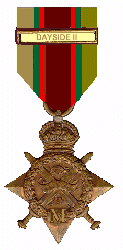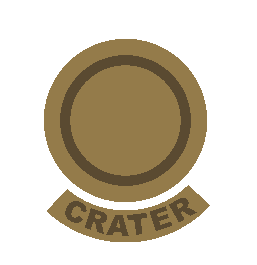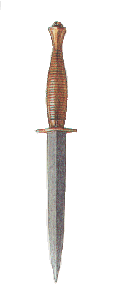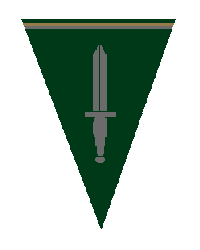Henry's Star I - Crater
The 2nd Dayside Campaign Introduction This section of the article deals with the details of fighting on Crater's Dayside, several scenario ideas and the details for some of the vehicles used to support the Armoured Commando. These details should really only be read by the GM and revealed to the players when needed. Narrative The platoon has just been crashed out to some prospecting hub out in the MBN about 1000 clicks from KDC. According to the PC these guys had already Cried Wolf twice and brought in the Fireforce. So as part of the stand-by company we were being sent in to show the flags and show the locals a little reassurance. Consequently me and the rest of 7 Platoon are packed into this stinking hopper for the best part of four hours. Diary Entry - 17/03/03 - 0345 ZULU SNAFU. The locals are not pleased to see us. At first it was all smiles and their Big Man giving water to the LT. Then he clocked there were only 24 of us boys from the Duke's Own and no Owens they started to get a sad on. LT tries the charm but these Daysiders are suspicious bastards, they know we're here because some guy in HQ doesn't believe them. LT goes to Plan B: Hearts and Minds. Platoon starts digging in and establishing defences. Bloody hard work. Profusion of wadis nearby make siting the automatics a nightmare. Told LT that we should move the base. LT says we can't because it's sitting on a working well. Yet more digging! Diary Entry - 17/03/03 - 2148 ZULU Locals are very suspicious. Had a word with their Big Man, he says some of his people have been spotting Bugs in the distance for the last three weeks. Most of them have headed off and there's only his family and a couple of trusted people left keeping the fort open. Don't know if I trust him or not.. Troops finished phase one digging. LT wants us to go down to phase two, as per the book. Convinced him to allow the blokes eight hours in routine before we start again. Diary Entry - 18/03/03 - 0916 ZULU Big panic. One of the sentries out covering the digging has gone missing. Moorcroft. He's a screw up but not likely to wander. Patrols into the wadis haven't found anything. Starting to get a bad feeling. Troops stood to. LT had a big scene with the locals. He hasn't handled it well, I couldn't smooth it over either. Diary Entry - 19/03/03 - 1119 ZULU Still no sign of Moorcroft. Hopper came in with more supplies. Looks like we're staying, LT says HQ doesn't want to give up any water source. Typical. Anyway, more mines out to our front and we're back in routine. Diary Entry - 21/03/03 - 1250 ZULU This is getting ridiculous. A patrol out to check the automatics managed to trigger a jump-mine this morning. Two dead and one with his guts spread over the desert. The Dusty got here in time and got Henderson away, hope he makes it. Anyway, locals went ape, got completely spooked and start packing. Another stand-off between the Big Man and the boss. Unless we call Fireforce they're going, the boss stands his ground and they're gone. I don't know if there are Bugs out there, but my guys are so spooked they're making stupid mistakes, two of them are dead because of it. The LT isn't helping any, he wants to call Fireforce but because he wouldn't do it for the civvies he can't. I think he's seeing his career vanishing in front of his eyes and right now he's bloody useless. Troops on stand to. Making sure they're more scared of me than anything that might be out there. Diary Entry - 22/03/03 - 1450 ZULU Situation recovering. Boss calmed down. Troops functioning properly and morale back. Well at least they've started bitching again! Back in routine. The departure of the civvies has removed the main element of panic and hysteria. Thank God for that! Diary Entry - 23/03/03 - 0023 ZULU Diary belonging to
01926239 Sgt P R Owen, 1 CRATER. Location SITE HOTEL NINE 'Over the last three years I've fought the CTs on Aurore, Kimanjano, BC-4 and now here. I have to say this s*** hole really takes the biscuit.' Lieutenant Williams, OC No.2 Troop 'Sun Devils', The Armoured Commando The Dayside of Crater in the Henry's Star system is one of the most inhospitable of all the theatres to see major fighting between human and Kafer forces. The Dayside is constantly exposed to the glare of the twin suns and the only darkness is found in the shadows or during particularly heavy dust storms. This 'unending day' has major morale effects on those humans living and fighting in the Dayside. The temperature in the Dayside is an oppressive 40 to 50 degrees and this can leap almost to boiling point during solar flares. The atmospheric pressure is so low that breather masks are required for normal levels of activity to be sustained. The thinness of the atmosphere is also responsible for high levels of background radiation requires protective clothing to be worn. Geography The main operations areas on the Dayside are dominated by huge areas of flattish desert that stretch from the twilight zone at the foot of the Rimwall Mountains to the Rhondda Mountains at the Hot Pole in the Deep Dayside. Three main outposts mark the route that reaches out from the lightly populated uplands, the Georgetown Mine, Eisen's Tower and Krak des Chevaliers. This corridor is the focus of most of the heavy fighting. The desert is not what most humans think of as a desert. There is little sand, it is mostly a rocky, hard baked wasteland. It is criss-crossed with ancient wadis and canals left over from before Crater received the asteroid impact that changed it irrevocably. These wadis are generally steep sided with rock filled floors, and are the home to most of the Dayside's flora and fauna. They are also excellent routes for infiltration, a fact utilised by both sides in the war. There are also numerous areas of high ground which tend to be the site of mining installations. The general flatness of the desert and the temperature gradient across its length has given rise to near constant winds. Around the polar regions these tend to pick up the lighter dust particles and starts dust storms. The storms are frequent but short lived and they can reduced visibility at ground level to virtually zero. They also cause dust particles to get into almost every nook and cranny of shelters, vehicles and humans! The major concern in the Dayside is water, there is no surface water and only limited underground aquifers. These can only be reached by drilling and produce heavy salted, brackish water that must be purified. However these solar or wind powered wells are the centre pieces of the limited number of human communities on the Dayside. Most of these communities are subterranean or built into squat towers. The Dayside has always been sparsely populated, mostly by prospectors and miners. The Daysiders were always independently minded and suspicious of outsiders. The occupation of the region by the Kafers devastated most of their settlements. Worse still most of them were captured by the aliens and forced into slave labour. Those survivors have attempted to start again and are still suspicious of other Craterans and the military. However their hatred of the Kafers has increased their willingness to co-operate a little. Conventional forces Conventional infantry and armoured units find the going very difficult on Crater. Infantry have to be masked and heavily clothed to protect them from the low pressure and beating sun. These measures substantially reduce their performance in fighting. Also the thermal sights used to such good effect in fighting on Beta Canum and Joi are much less effective on the Dayside, especially during fighting in the wadis and canals. Foot infantry are also tied very closely to supply depots or logistics columns primarily by water requirements. Providing an infantry company with sufficient water to survive a week on the Dayside is a vast problem on its own. Armoured units are also constrained by the massive distances and logistics problems. The fine dust causes major maintenance problems that also have to be solved. Logistics columns sent out to sustain armoured forces themselves require great levels of support. In fact armoured forces are as tied to bases as their infantry companions, although they have a larger radius of operation. On Crater the phrase 'Economy of Force' is a vital one, judging precisely how large a unit is required to fulfil a task. The forces on Crater solved this problem by using massive ACV carriers as mobile bases (see below) for armoured forces. It was the deployment of the three carrier Task Forces (Leviathan, Titan and Atlas) each carrying an armoured company group of the RGL's Kampfgruppe Paterson which was the turning point of the Battle of Krak des Chevaliers. This allowed the German Legionnaires to act en-masse with surprise to destroy the forces screening the safe place. Self sufficiency is vital on the Dayside. Unfortunately with the departure of the Kampfgruppe no armoured units are currently on Crater, however a specially trained Wellonese unit, 7th Battle Group is excepted in some 3 months. The infantry also has a key role to play in defending or seizing the usually subterranean bases. This requires concentrated training in close quarters fighting, a role at which the Kafers excel. Special human units are trained to act as the spearhead for storming operations, which requires intense aggression, special equipment and near suicidal bravery. Following this 'forlorn hope' are the regular soldiers of supporting infantry units who have to consolidate and expand on the work of the Storm Troops. The elite British 6th Assault Brigade took over 1000 casualties storming Krak des Chevaliers alone. Storming operations are not for the faint hearted and the CDF would be loath to attempt another major storming any time soon. The morale of the Crater Regiment battalions are already at breaking point. Bases Without logistic support any modern fighting force cannot function. Given the huge distances involved in campaigning this is especially vital in the Dayside. Supply depots have been the keystone of victory, but given the prevailing conditions it has been usual to co-locate them with existing settlements and outposts. Especially given that these locations usually have access to even meagre supplies of deep drilled water. The history of the 1st Dayside Campaign was the story of the seizing of enemy bases and the setting up of human supply dumps inside them due to the small number of suitable locations in the area. The Campaign broke down into set piece battles that all essentially took the same course. The destruction of the enemies mobile forces protecting the base. The isolation and besieging of the enemy base. The final phase was always the most bloody and involved the storming and clearing the base itself. Although the tactics were simple the execution of these plans often proved hugely troublesome. The three key bases that were the sites of the main battles are still in use by the CDF. The Georgetown Mine, Eisen's Tower and the infamous safe place Krak des Chevaliers. Of these KDC is the main forward operations base for the 2nd Dayside Campaign. Carved by human prisoners from the basis of an abandoned mine, the inside of the complex is a rabbit warren of tunnels and rat runs. However the upper levels are still in use as a command centre, barracks and as a gigantic hanger for carriers. Some in the garrison are worried about the security of the complex, after all British troops managed to infiltrate it, the Kafers could play the same trick. Carriers ACV Carriers were the answer to the problem of supplying and securing troops deep inside the Dayside. The huge converted ore carriers would act as both mobile logistics and fire bases, in some cases capable of carrying a company group of armoured troops or a full battalion of infantry. Manned curiously by the Royal Naval Volunteer Reserve of Crater and dubbed 'Her Majesties Land Ships' (the units were formed by the Royal Navy resident officer during the Occupation) they made the difference that won the 1st Dayside Campaign. They allowed the human forces to strike deep, by-passing the Kafers static defences. Carrier were vulnerable to enemy attack and several were destroyed, most notably Hercules and her Task Force. However most operated in concert with supporting units, normally a large carrier would be accompanied by a Task Force of smaller, heavily armed and armoured carriers, conventional Hovertanks and APC deployed from their decks and a screen of drones. Since the 1st Dayside Campaign most of these carriers have been decommissioned and returned to civilian tasks, however six remain in CDF service. The largest carriers are the Behemoth and Leviathan. Tipping the scales at 350 tonnes these are militarised heavy cargo carrying RO-RO ACV's capable of moving 20 armoured vehicles at a time at a maximum speed of 100kph. Nuclear powered they don't need refuelling and they can maintain this embarked force in the field for some two weeks before requiring replenishment. During the 1st Dayside Campaign HMLS Titan and her Task Force operated behind the enemy lines for seven weeks in this manner. The two remaining carriers are equipped with heavy ECM and short ranged self-defence weapons in addition to a variety of drones. The RNVRC's other four carriers are smaller vehicles massing some 175 tonnes, which were specially converted for closer action. These are the Annihilator, Vindictive, Warspite and Xenophobe. These carriers are much more heavily armed and armoured, whilst are still capable of carrying a company of infantry or four vehicles. They have a similar endurance to the larger carriers whilst their firepower includes two turret mounted 75mm MDC, Sky Streak HVM, twin automatic 120mm mortars, an MLRS system and several close-in weapons systems. As well as these large carriers the RNVRC maintains eight specially modified D-607 ACVs, known as Chariots. These are small load carriers modified to carry 6 CW each on an open rear deck, with a 25mm cannon mini turret as its only defence. These vehicles are intended to operate from the smaller carriers, with each carrier carrying 4 Chariots, deploying an entire Troop. Chariots are not intended to close with the enemy themselves but to deliver the CW to the combat zone and enhancing their tactical mobility whilst minimising the risk to the carriers. Intelligence Tactical intelligence is hard to come by on the Dayside. The area is unremittingly desolate and including small mining outposts, wildcat prospectors and the like the civilian population is under 1500 and most of them never journey beyond the immediate area of their outposts. Only the roving prospectors provide any coverage of the vast expanses of the Dayside and they were sometimes unreliable. The general conditions also prevented the deployment of large scale mobile reconnaissance formations and special forces alike into the depths of the Dayside. Consequently much of the Dayside remains un-surveyed by human eyes, which has remained one of the major stumbling blocks to human eradication of the Kafer threat. Occasional human intelligence comes from the very few Daysiders who manage to escape from the slave pens that the Kafers still posses. However after desperate treks through the desert to safety most have little recollection of the location of the Kafer bases. All they remember is that the aliens continue to use them to build underground bunkers and facilities. The greatest fear of the CDF is that the aliens are constructing another safe place like Krak des Chevaliers. In order to bridge the 'intelligence gap' the Royal Space Navy has launched a sophisticated constellation of communication and surveillance satellites around Crater. The Prometheus system combines comms, visual, SIGINT and ELINT resources and is aimed squarely at the Dayside (although some alarmist Reformists have claimed it could be used against them). The system has brought some good results (mainly in locating shallow supply bunkers) but has not yielded the predicted successes. This is due to conditions in the Dayside; baking heat hazes and dust storms, and Kafer counter-measures such as keeping to the canals and imposing EMCOM. Nevertheless the Commando has full access to this system through their RSN Intelligence Officer. Prometheus is a very expensive system as the high levels of radiation and solar flares regularly knock out satellites which must be replaced. The pre-War intelligence apparatus, the Special Branch of the British Crater Police has proved largely worthless. It continues to be obsessed with monitoring the Miner's Association and prominent Reformists. Its commanders treat the Kafer threat as secondary to safeguarding the interests of the Consortium. Policemen near the front line are more focused and have aided in the creation of the Auxiliary Patrol Units of special constables to aid in the gathering of basic intelligence around the remote communities. High Command
Above: Subdued shoulder flash worn by all CDF personnel The Crater Defence Force is a unified command that has operational control over all the military units on Crater, these include three field force battalions (1 British and 2 Crateran), the two Commandos, RNVRC and local defence forces. The CDF is currently commanded by Major General O' Connor late of the Dublin Fusiliers, who masterminded the 1st Dayside Campaign, although most operations are run by his Chief of Staff Colonel John Holden. Holden is a highly competent officer and fought bravely in the Occupation, he transferred to the Crater Regiment some ten years ago and is highly placed in Loyalist society. Holden is not above using his contacts to undermine O' Connor's position. However O' Connor's links to the liberal new Governor General Sir Irvine Jameson somewhat counteracts this. In fact the political conflict between the well entrenched Loyalists backed by the Consortium and the more liberal in-comers brought in to sort out Crater's problems take up almost as much time for the officers in CDF HQ as prosecuting the war. The reactionary Duke of Crater, the head of the Consortium and leading Loyalist has especially made up his mind to try and unseat both General O' Connor and the Governor General. He may be unaware however that the British Colonial Office is no longer willing to allow Crater to be run solely for the benefit of the Consortium. Fireforce The vast majority of outposts in the Dayside and those closer to the Rimview are undefended except for a scattering of small arms in private possession. If threatened by a Kafer raid they are completely vulnerable and easy prey for the aliens. To counter this the CDF has established a rapid response unit at Rimview, known as the Fireforce. The Fireforce is composed of an infantry company, a troop of close combat specialists from the Storm Commando and a Troop of the Armoured Commando. These units are manned by different units in rotation and are maintained at high states of readiness. When an alert is received the troops scramble aboard the four stand-by Raven-class landers of the RSN's 1108 Naval Interface Squadron. Using these landers they can reach most locations across the Dayside within 45 minutes of an alert. The Ravens land at a pre-surveyed landing zone near the settlement, usually carrying two sections of CW and two platoons of infantry. The CWs and one platoon of infantry advance to the settlement whilst the remainder dig in and secure the LZ. The Ravens then split, two remaining to give fire support and local mobility whilst two return to Rimview to bring in the rest of the Fireforce if required. If the troops on the ground run into Kafers they will attempt to destroy any vehicles with air support whilst pinning down any foot soldiers until the arrival of reinforcements. Most Fireforce operations are false alarms, which is frustrating for the soldiers. However the creation of units like the Armoured Commandos Recce Troop and Auxiliary Patrol Units of the BCP has reduced the proportion of these occurrences. However when the Fireforce does run into Kafer forces it can have a serious fight on its hands. The presence of CW can usually swing the fight in its favour but battles have often been close run, on occasions escalating into major battles with the committing of other CW Troops and infantry battalions. If the enemy has taken the settlement the Fireforce usually cordons off the area and awaits the arrival of the Storm Commando troop to enter the location. Sometimes the Fireforce is just too late and can only mop up the dead. Whatever happens, a tour on Fireforce duty is never dull. Combat Walkers CW operations are the life blood of human military operations on Crater. They take the place of the infantry in most operations, having the firepower, protection and mobility to undertake operations both on the plateau and in the wadis. Their sensors and fire control systems allow them to dominate enemy infantry at relatively little cost to themselves. Whilst a pair of walkers can easily outfight and outmanoeuvre most Kafer fighting vehicles. CWs are most often used to secure areas around settlements or bases, especially clearing out Kafer positions on the approaches either on their own on in combination with small units of infantry. They can also be used in ambush. However CWs must always be used with logistic and maintenance support close at hand, even the heavily modified Bowmans of the Armoured Commando will not last long on their own on the Dayside. A key role for CW is in the provision of stop groups at key areas during clearance operations. Kafers are renowned for assaulting these positions to escape from killing zones and only CW's have proved consistently effective at stopping them breaking through when placed in the correct locations. Deployment techniques have been mentioned above. However a special note should be made that para dropping, so successful on New Africa, is not viable on Crater due to the low atmospheric pressure. Similarly low altitude para extraction deliveries limited for similar reasons and because the Raven is not capable of this technique. Rocket assisted drop techniques have been experimented with but because of the effectiveness of Raven insertions have not been continued with. In addition CWs retain their efficiency in urban warfare, and were used to great effect in the guerrilla war under Rimview during the occupation and in clearing the upper levels of Krak des Chevaliers. However most CW pilots dislike this role as casualties are always very high. However the presence of CWs in any battle decreases casualties amongst the infantry as well as vastly improving their moral. In short, on Crater the combat walker is a battle winner. The Enemy The Kafers on Crater have proven themselves to be immensely resilient. Twice now the human forces have been convinced that the aliens have been beaten, only for them to spring up again. The Kafers on Crater have gained a reputation as being immensely difficult to destroy, with some justification. The key to their resistance is their leader, Kch*k'ch*!!, or Disciple of Struggle. A commander from the Ylii border worlds in charge of a well armed detachment sent by its Suzerain V'ded'ah as a token of support for Triumphant Destiny. However this unit was relegated to garrison duty on newly conquered Crater. Disciple of Struggle was quick to realise the vulnerability of Rimview to attack, and it set about creating 'depth' to his position. It did this by using human prisoners to build an array of small supply depots and bases on the Dayside. Including the safe place the humans came to call Krak des Chevaliers. When the humans attempted to liberate Crater its initial defence, mostly conducted with Kafers loyal to Triumphant Destiny, was almost good enough to destroy the invading human force. However it was forced to withdraw into the Dayside position where many of the troops were concealed. It intended to fight on at a low intensity, conserving its strength as best it could until the Kafer fleet returned. However the nature of the Kafer troops meant Disciple of Struggle had to sanction raids on human outposts to keep its force together. In doing so it started the 1st Dayside Campaign in earnest. The fight was an intense and stimulating one for the Kafers, especially when subjected to storming attacks, but one they were to loose as more and more resources were pitted against them. During the campaign Disciple of Struggle came to realise that its position was doomed, it realised that fixed positions would eventually be the end of its force. So it planned a further fall back position, except this time there would be no single safe place. The surviving troops would instead roam through the canals in the deep Dayside between a number of locations stocked with supplies, from time to time these forces would gather to launch raids and to harass the humans. In this way it hoped to buy even more time for the return of the fleet. When Krak des Chevaliers fell Disciple of Struggle's plan came into action, although it was badly injured in the storming and only just managed to escape alive. Now the 400 remaining Kafers exist in the deep Dayside, largely concealed from the humans and emerging only to launch vicious raids. However Disciple of Struggle has come to the worrying conclusion that the dispersed operations vital to the survival of the remaining troops is reducing them to something like Aach*ah, smart barbarians. It even fears for its own sense of race. The Kafer troops that remain under Disciple of Struggle's command are survivors. They live under constant threat of death from the humans and their environment. Half of them are Gnich*, thinking veterans. They represent an exceptionally wily enemy for the human troops that oppose them, there are no easy battles against these Kafers. They have truly mastered light infantry tactics especially in the wadis and canals of the Dayside. Concealed amidst the rocks and debris their shells blend into the background. Even in small numbers can give human soldiers, even the impressive CW's, nightmares and make them pay in blood for every foot of ground taken. Their main problem is in the lack of supplies. Disciple of Struggle planned well however, creating many small, buried supply caches that they can draw upon. However these will become a dwindling resource and probably run out in the next six months. Another problem is water, some precious deep drilled wells are available at some base locations but water is a key raiding target for some groups. The main military weakness is the lack of vehicles, most of which were destroyed in the climactic Battle of Krak des Chevaliers. However some survived and some have been recovered and repaired by Kafer salvage parties operating perilously close to the human stronghold. A very few Deathsleds are present but most surviving vehicles are tracked APCs, some human vehicles have also been pressed into service. Raiding parties usually consist of up to thirty Kafers and two or three rare combat vehicles. Disciple of Struggle has even managed to co-ordinate long distance raids in which units have to attack small settlements in order to get to their actual targets in the twilight zone. This usually calls requires feints to draw out the Fireforce, but the technique has proven successful and may be called upon later for more impressive raids. |





